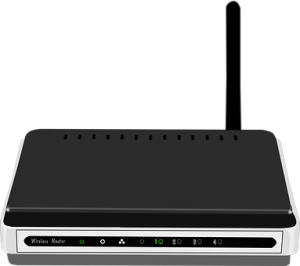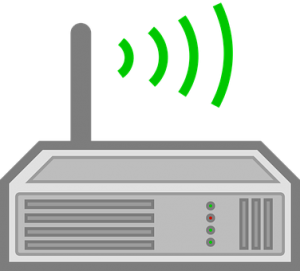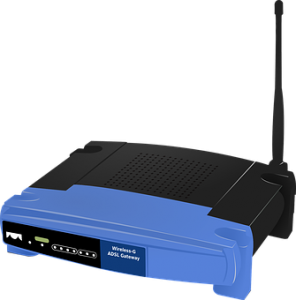Router Setup
In our interconnected world, having a strong and secure internet connection is more than just a convenience; it’s often a necessity. Whether you’re working from home, streaming your favorite shows, or managing a network of devices, the role of a reliable router cannot be overstated. Yet, the task of routers setup, especially when it comes to configuring routers settings or initiating a wireless routers setup, can feel daunting to many.
 Through this blog post, we will clarify the process, guiding you through the essential steps of routers setup, including how to configure router settings to meet your specific needs and preferences. From a simple home setup of the wireless router to more complex configurations for businesses, our comprehensive guide will provide insights, tips, and practical advice.
Through this blog post, we will clarify the process, guiding you through the essential steps of routers setup, including how to configure router settings to meet your specific needs and preferences. From a simple home setup of the wireless router to more complex configurations for businesses, our comprehensive guide will provide insights, tips, and practical advice.
Join us as we explore the world of routers, unraveling the complexities and empowering you with the knowledge to create a stable and secure network. Whether you’re a tech-savvy individual looking to optimize your home network or a beginner seeking guidance for your first wireless router setup, this guide aims to be your roadmap to success in the ever-evolving landscape of network connectivity.
How to Setup Router:
Setting up a router, particularly when it involves a wireless router setup, is an essential task that lays the foundation for your network’s connectivity. Whether you’re looking to connect multiple devices at home or need a robust network for your office, understanding the setup process is key. In this section, we’ll provide a step-by-step guide to setting up a wireless router, focusing on both wired and wireless router setup:
- Choose the Right Location: Positioning your Router in a central location can enhance the coverage of your wireless network. Consider this during the setup to ensure strong and stable connectivity.
- Connect to the Modem: Connect the Router Using an Ethernet cable with your modem. This connection forms the basis of both wired and wireless routers setup.
- Power On the Router: Plug the Router into a power source and turn it on. The routers setup begins with the activation of the hardware, which might take a few moments to initialize.
- Access Router’s Web Interface: Open a web browser and enter the Router’s IP address to access its web interface. This step is vital in setting up a wireless router, as it allows you to configure various settings.

- Log In with Default Credentials: Most routers come with default login credentials, which you will use during the routers setup process. These details are typically found in the router’s manual.
- Configure Basic Settings: Here’s where you set up the network name (SSID) and password. These are essential aspects of setting up wireless Routers and wired as well as ensuring that your network is secure.
- Update Firmware if Necessary: Keeping the Router’s firmware up-to-date is an often-overlooked step in the wireless router setup. This ensures optimal performance and security.
- Connect Devices: Once you have completed the routers setup, you can begin connecting your devices, either through Ethernet cables or via Wi-Fi, for a wireless setup of your router.
- Test the Connection: Lastly, perform a quick test to ensure that everything is working as expected after setting up the wireless router.
Understanding these steps in the routers setup process and applying them diligently can lead to a successful wireless router setup, allowing for seamless connectivity across all your devices. In the next section, we will delve further into the intricacies of configuring routers settings, providing you with the expertise to tailor your network to your specific requirements. Whether it’s a simple home network or a more complex business setup, this guide is designed to make the process of setting up wireless router accessible and straightforward.
How to Configure Router Settings:
Configuring routers settings is an essential aspect of optimizing your network’s performance, security, and functionality. Whether you need to access router settings for a home network or make adjustments to wireless router settings for a more extensive system, understanding how to navigate and configure these settings is vital. Here’s a step-by-step guide to help you configure router settings to suit your specific needs:
- Access Router’s Web Interface: To access router settings, open your preferred web browser & enter the Router’s IP address. This address is typically found in the router’s manual or on a label on the device itself.

- Log In to the Router: Use the default credentials or the ones you set up during the routers setup to log in. This will allow you to access router settings and make necessary adjustments.
- Navigate to Wireless Settings: Once you access router settings, look for the wireless settings section if you’re looking to modify wireless router settings. This section allows you to adjust various aspects of your Wi-Fi network.
- Configure Network Name and Security: Here, you can change the network name (SSID) and set up a strong password. These wireless router settings are essential for securing your network.
- Adjust Channel and Bandwidth: Within the wireless router settings, you can choose the best channel and bandwidth for your network, reducing interference and enhancing performance.
- Set Up Guest Network if Needed: Creating a guest network is an excellent way to provide internet access to visitors without sharing your main network’s details. You can configure these settings in the wireless router settings section.
- Configure Parental Controls and Firewalls: Some routers allow you to set up parental controls and firewalls directly through the router’s settings. These features enhance network security and control.
- Update Firmware: Regularly checking for and applying firmware updates is essential. You can usually find this option when you access router settings through the web interface.
- Apply and Save Changes: After configuring the router’s settings to your liking, ensure you apply and save the changes. Some routers may require a restart to implement the new wireless router settings.
- Test the New Configuration: Always test the network after making changes to ensure that everything is working as expected.
Knowing how to configure router settings allows you to tailor your network to your exact requirements and preferences, whether you’re looking to enhance security, boost performance, or enable special features. This guide offers a clear path to access router settings and adjusts wireless router settings, giving you control over your network’s functionality and security. With a few modest steps, you can configure router settings to create a network that works seamlessly and efficiently for all your connected devices.
Conclusion:
 In the ever-evolving landscape of technology, having a stable and secure network connection has become an integral part of our daily lives. The complexities of routers setup, configuring router settings, and wireless routers setup might seem overwhelming at first glance, but as we’ve discovered, they are tasks that can be mastered with the right guidance.
In the ever-evolving landscape of technology, having a stable and secure network connection has become an integral part of our daily lives. The complexities of routers setup, configuring router settings, and wireless routers setup might seem overwhelming at first glance, but as we’ve discovered, they are tasks that can be mastered with the right guidance.
Through our detailed exploration of the routers setup process, delving into the steps to set up a wireless router, and learning how to access and configure router settings, we’ve unlocked the doors to a world of seamless connectivity. Whether for a bustling office environment or a cozy home network, understanding these critical aspects of networking empowers you to create, manage, and optimize your connections.
Routers setup is no longer a task reserved for tech experts. With this guide, anyone can embark on the journey of setting up wireless Routers and configuring routers settings to suit individual needs and preferences.
In an age where connectivity is key, taking control of your network through comprehensive routers setup and understanding how to configure router settings can lead to an enhanced online experience. The path to a successful wireless router setup lies in attention to detail, following proven guidelines, and a willingness to engage with the technology at your fingertips.
May this guide help as a valuable resource in your endeavors, bringing confidence and competence to your interactions with routers, and may your connections be ever strong and secure. Please visit our Homepage to know more about routers and resolve related problems.
